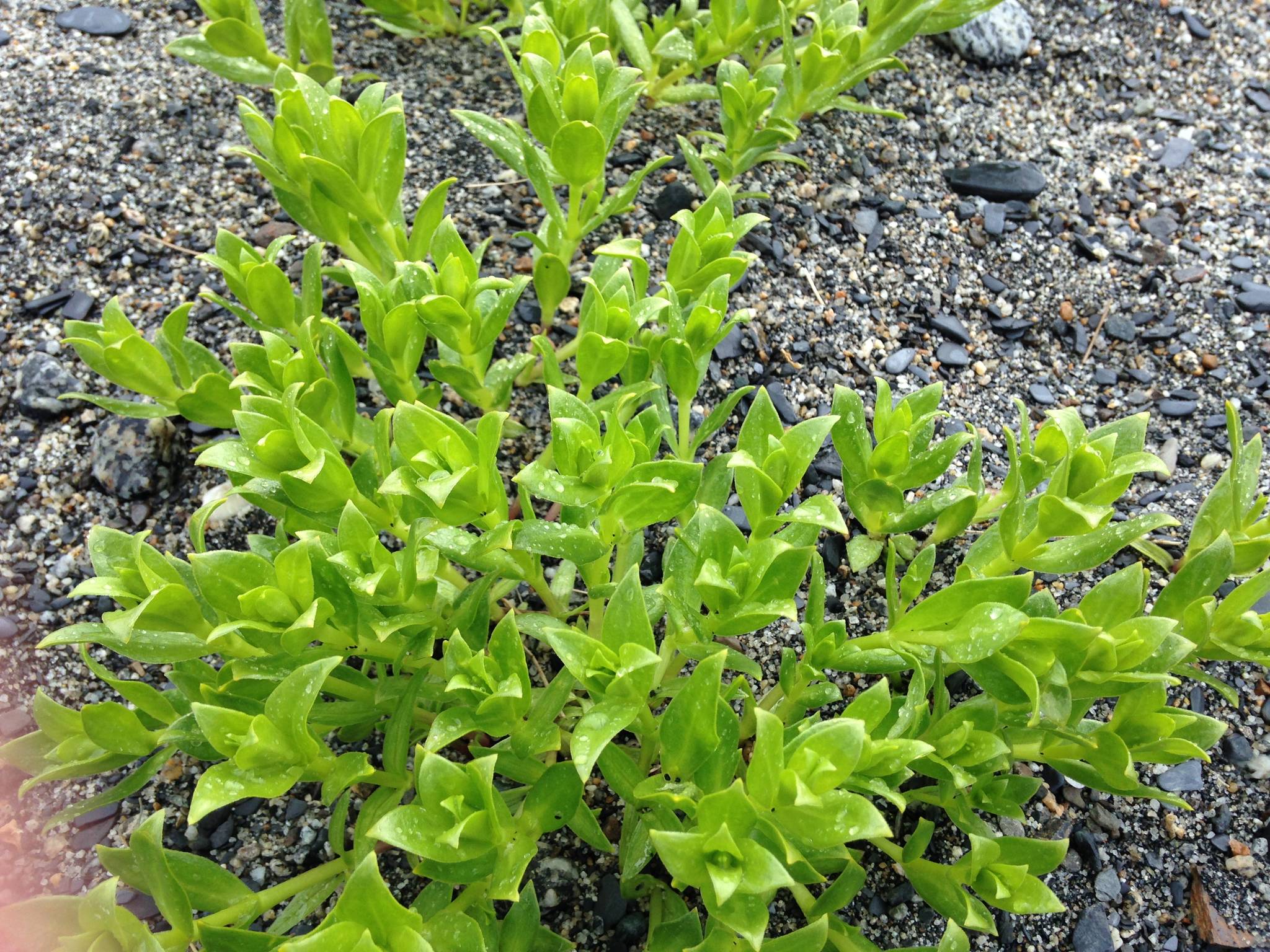Some wild foods are easy to nibble as you walk trails or meander the tide line. Snacks that you can grab by the handful as you continue your hike, like salmonberries, watermelon berries, and beach greens. No matter where you wander, they are readily available.
Beach greens are one of the first things to sprout in the spring. Coastlines that were barren as you walked against a strong headwind in early spring become decorated with the bright, yellow-green stems. The plant is a set of creeping stolons, horizontal plant runners that take root at various points. This makes it well suited to the upper tide line that can shift and move over time.
Also known as sea sandwort, sea chickweed, or sea pimpernel, these plants are found all along the Alaskan coastline and other temperate and boreal locations. They have long been a valued food source with their high concentrations of vitamin A and C.
Early spring is the best time to harvest. These succulent greens have a sweetness that dissipates as the white flowers begin to appear at the end of their extending runners. If you’ve tried them and found a particularly nasty aftertaste, you’ve probably tried older plants. There are multiple growths of this plant throughout the growing season, so pay attention to the newer growth to avoid the off-taste.
Although, I’ve munched on beach greens for years along the trail, I started using them in recipes last year. As I do with any new edible, I contemplate their resemblance to other foods that I already use. This is never an exact fit, which is a good thing. The reason why I like wild plants is the distinct flavor they bring to what I’m cooking. I like these unique accent flavors.
In the case of beach greens, I began with a premise that their texture and taste was closest to cabbage. The flavor of a Napa cabbage mixed with a sweet pea. To emphasize the distinct taste of this particular plant, I used it in one of my favorite cabbage dishes, an Indian kofta. I simply replaced cabbage for beach greens to make the spiced vegetable patties.
Many cultures ferment the plant. According to Maria Dexter’s post on the Norton Sound Health Corporation site, the Inupiaq method was to first boil them until they softened. They would then stick the atchaaqluk in a barrel to ferment, occasionally throwing in berries. In Iceland they combine beach greens with a sour whey to make a beverage. I’ve been told by a friend, who tasted it, that it has all the pleasantness of drinking olive oil straight from the bottle.
I’ve been trying out a few batches of my own fermented beach greens using typical sauerkraut recipes. The hard part is determining their salt content. Unlike beach asparagus, they are not noticeably salty. Yet, they are located on tidelines and occasionally get washed over by waves. My experiments all involve adding different salt water concentrations.
Whatever method you use, whether it’s throwing beach greens in an omelet, using them sautéed in a tortilla, or just nibbling as you move down the trail, beach greens are a wonderful edible that seem to pop up just when you need a snack.

